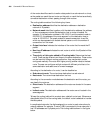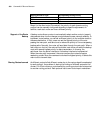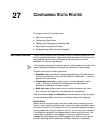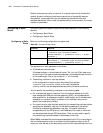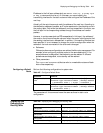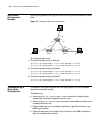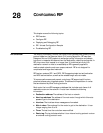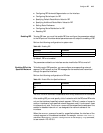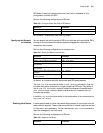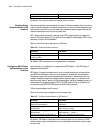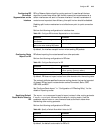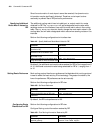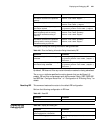
414 CHAPTER 28: CONFIGURING RIP
The procedure of running RIP can be described as follows:
1 When a specific router is starting RIP for the first time, it broadcasts request
messages to the neighbor routers. After receiving the request messages, the
neighbor routers respond to the request and return response messages including
local routing information.
2 After receiving the response message, the router modifies the local routing table
and sends triggered modified messages to the neighboring routers by
broadcasting the route modification information. After receiving the triggered
modified message, the neighboring routers forward them to their neighbors. After
a series of triggered modification broadcasting, all routers can receive and
maintain the latest routing information.
3 At the same time, RIP broadcasts the local routing table to the neighbor routers
every 30 seconds. The neighbor routers receive the message and maintain the
local routes. Then they select the best route to broadcast the route modification
information to their neighbor networks. In this way, the updated routing
information can be globally effective. Also, RIP applies a timeout mechanism to
dispose of an outdated route and to make sure that the route is real-time and
effective.
Though RIP is widely used by most of the router manufacturers, it has limitations:
■ It supports a very limited number of routers: RIP is only suitable to small
autonomous systems, such as most campus networks and local networks with
simple structure and high continuity.
■ The route calculations depend on a fixed metric: RIP cannot update its metric in
real time to adapt to network changes. The metric defined by an administrator
remains constant until it is updated artificially.
■ It may cost considerable network bandwidth to update its information: RIP
broadcasts an update message every 30 seconds so it may cause low efficiency
in a network with a lot of nodes.
Configure RIP Begin all configuration tasks by first enabling the RIP routing process and
associating a network with an RIP routing process, then configure other functional
features related to RIP protocol. The task of configuring the interface-related
features is not subject to whether RIP has been enabled.
The original interface parameters become invalid after the RIP is closed.
Configuring RIP includes tasks described in the following sections:
■ Enabling RIP
■ Enabling RIP at the Specified Network
■ Defining a Neighboring Router
■ Specifying RIP Version
■ Configuring Check Zero Field of RIP Version 1
■ Specifying the Status of an Interface
■ Disabling Host Routes
■ Enabling Route Summarization for RIP Version 2
■ Configuring RIP-2 Packet Authentication on the Interface



